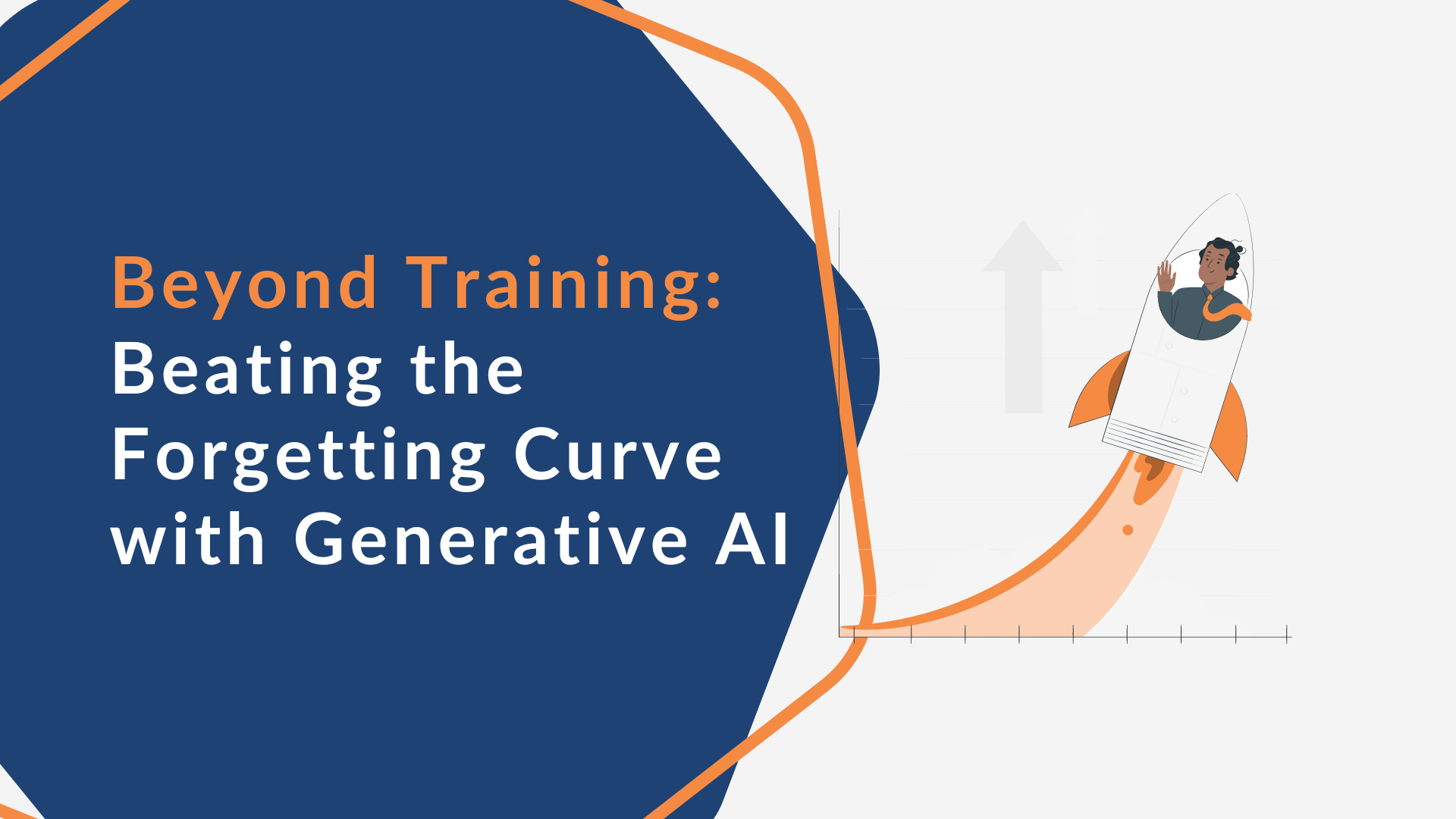Investment in Training Rarely Translates into Improved Performance
Every year, global organizations spend billions on learning and development programs. Yet only a fraction delivers real results. In many cases, despite the initial learning, there is no significant improvement in organizational performance. This is often because individuals tend to quickly fall back into their previous habits and ways of working.
Imagine a hypothetical company, let’s call it TechnoAdvance, a leading player in the tech industry. To stay ahead in the competitive landscape, TechnoAdvance decided to invest heavily in a leadership development program, aiming to enhance the skills and capabilities of its managers and team leaders. The program, meticulously designed and executed, included workshops, team-building exercises, and comprehensive training sessions.
Initially, the response from the participants was overwhelmingly positive. Employees felt energized and more equipped to tackle leadership challenges. The training included practical simulations and real-time feedback, which were highly appreciated for their hands-on approach. Participants left the program with action plans, eager to implement their new skills in the workplace.
However, two years later, an internal audit revealed a startling reality. Despite the initial enthusiasm, little had changed in the organization’s day-to-day operations. So what went wrong? Why, after the initial enthusiasm and energy, did employees at TechnoAdvance fail to implement the skills they had diligently learned during the training program? Most importantly, why didn’t the substantial investments in time, money, and effort translate into improved performance? The answers lie in the very essence of training – its purpose, timing, and content.
The Flaw in Learning Intent
One significant issue often observed in corporate training programs is that the motivation behind learning may not always be aligned with the intended outcomes. In many cases, employees engage in training to accumulate learning credits, a prerequisite for promotions and career progression. Similarly, Learning and Development teams sometimes measure their success based on flawed KPIs, such as the total number of learning credits earned by employees. While these metrics are easier to quantify, they often result in flawed incentives, leading to less-than-desirable outcomes.
The Flaw in Learning Timing
Effective learning is intrinsically linked to timing. Employees learn the best when they are compelled to learn, driven by the immediate need to apply their knowledge to real-world situations. However, the typical approach to training often falls short in this regard. Employees are subjected to uniform training sessions on a schedule set by the L&D department, which may not align with the specific demands of their roles. Consequently, the relevance and effectiveness of such training suffer as a consequence.
The Flaw in Learning Content
Another stumbling block in the quest for effective training is the choice of content. Imagine asking busy employees to attend a mandatory training session on topics like “business writing skills” or “conflict resolution” without considering their individual needs or roles. Such generic courses, often unrelated to their day-to-day responsibilities, can lead to disengagement and disinterest, rendering the training ineffective.
The True Culprit Behind the Flaws of Training is the Forgetting Curve
One of the key factors contributing to the gap between learning and application is the phenomenon known as the “Forgetting Curve.” This concept, introduced by German psychologist Hermann Ebbinghaus, sheds light on how human memory functions over time and has significant implications for the success of training programs. The Forgetting Curve illustrates the rate at which information is forgotten after it is initially learned. It reveals that newly acquired knowledge tends to fade rapidly from our memory unless certain strategies are employed to reinforce and retain it.
In the case of TechnoAdvance, employees may have left their leadership development program with a wealth of new knowledge and skills. However, without a deliberate effort to counter the Forgetting Curve, that knowledge begins to erode almost immediately. As days turn into weeks and weeks into months, individuals gradually revert to their old habits and routines.
Beating the Forgetting Curve with an AI-First Approach
AI-first strategies have the potential to redefine the landscape of employee development by moving away from traditional, content-heavy learning models. Organizations must recognize that learning and meaningless knowledge acquisition do not necessarily precede effective workplace performance and that real development is not about acquiring knowledge but about accessing knowledge and applying it effectively and adaptively in the workplace. Click here to understand why learning does not necessarily enable human performance.
In-the-Flow-of-Work Learning: How AI Can Address the Flaw in Learning Timing
An AI-first approach has the potential to enable employees to take immediate actions and achieve tangible performance results. Unlike traditional training, AI-driven learning is continuous, providing employees with on-demand access to resources and support precisely when they need it. This empowers them to learn while tackling real challenges on the job. With AI, employees are exposed to the right knowledge precisely when they are most relevant, ensuring that the knowledge they acquire is contextual and highly applicable to the problems they are solving. As a result, employees not only gain a deeper understanding of the subject matter but also apply this knowledge effectively, preventing it from fading into obscurity as often happens with traditional training sessions.
Personalized Learning Paths: How AI Can Address the Flaw in Learning Content and Learning Intent
At the core of AI’s influence in corporate learning is its ability to personalize learning journeys. AI systems analyze individual profiles, including strengths, weaknesses, interests, and learning patterns. This data-driven approach enables AI to customize learning journeys, deeply resonant and engaging for each learner. This ensures improved knowledge retention and a more impactful learning experience.
Traditional training often fails to bridge the gap between generic content and specific learning intent. With an AI-first approach organizations can customize content to align with the roles and real-world applications relevant to each employee. This alignment ensures that the training is not just a theoretical exercise but a practical toolkit that employees can apply directly in their roles.
Real-Time Feedback: The Key to Reinforcement
AI-driven learning experiences can offer immediate, relevant feedback. This feature allows learners to immediately apply concepts in practical settings, thereby reinforcing the learning material. Real-time feedback ensures that any gaps in understanding are addressed promptly, leading to a more robust and long-lasting grasp of the subject matter.
Application in the Real World: Bridging Theory and Practice
One of the most significant advantages of AI-driven learning platforms is their ability to bridge the gap between theoretical knowledge and practical application. Learners are no longer confined to hypothetical scenarios; instead, they can test and apply concepts in real time, in real-world situations. This approach not only reinforces learning but also enhances the relevance and utility of the knowledge gained.
The Bottom Line
In this evolving landscape of corporate learning, the shift towards an AI-first approach heralds a transformative era – not just in how we learn, but fundamentally in how we apply and integrate knowledge into the very fabric of our professional lives. By harnessing the power of AI, we stand at the cusp of transcending traditional learning barriers, crafting a future where the acquisition of knowledge is not an isolated event but an integrated, dynamic process deeply embedded in the rhythm of our daily work.
As we venture further into this AI-augmented future, the true measure of success in corporate learning will no longer be the volume of knowledge acquired, but the depth of understanding applied and the tangible impact it creates. The ultimate triumph in defeating the Forgetting Curve lies not just in remembering, but in evolving – continually reshaping our skills and perspectives to meet the ever-changing demands of the professional world.
In conclusion, the journey towards an AI-first learning paradigm is more than an upgrade in our learning systems; it represents a fundamental shift in our mindset towards growth and development. It challenges us to think beyond the traditional confines of training and development, inspiring a vision where continuous learning and real-world application converge, creating a workforce that is not only knowledgeable but also dynamically adaptable, innovative, and forward-thinking.


